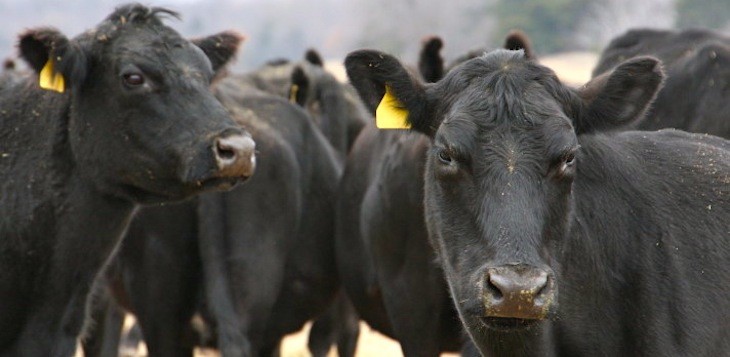Historically low cattle inventories projected to fall even further
by March 14, 2023 11:04 am 1,582 views

Cattle inventories are the lowest they’ve been in more than half a century, and will drop even further, said James Mitchell, extension livestock economist for the University of Arkansas System Division of Agriculture.
Drought during 2022 prompted many ranchers to liquidate herds after unable to find hay to feed their cattle.
“Have we found the bottom? No,” Mitchell said. “It will be 2025 until we see any significant expansion on a national level. In terms of any national impact, we’re not done with herd liquidation. All the hay we were hoping to get did not arrive. I don’t think people are quite done selling cows.”
Mitchell said beef production has recovered from the pandemic’s precipitous drop in 2020 but is forecast to decline through 2023. With tighter beef production, expect beef prices to be slightly higher, he said.
“The quantity side of this is per-capita beef consumption, which is forecast at 56.3 pounds per person in 2023,” Mitchell said. That number compares with 59.2 pounds per person in 2022 and 58.8 pounds per person in 2021. Some are going to quote this as erosion in beef demand. This is not the case. This number is misleading. We should be calling this per-capita availability.”
Per-capita beef consumption is calculated by taking the amount of beef in cold storage, plus production, minus exports, plus exports, divided by the U.S. population. In its biannual cattle report, the U.S. Department of Agriculture (USDA) reported a total of 89.3 million head as of Jan. 1, about 3% lower than the total reported a year ago, and the lowest since 2015. Beef cattle, bred specifically for slaughter and meat sales, declined 3.6%, to 28.9 million head, the lowest total recorded by the agency since 1962.
Global financial firm BTIG predicts that consumer beef prices will rise by 15% during the year, and prices will remain elevated in this cycle through 2025. While beef will be up, the report notes that poultry prices are predicted to drop by 9%.
Arkansas typically ranks among the top 15 beef cattle producing states. There were nearly 1 million head of beef cattle/cows in the state in 2020, USDA reported. Beef is typically the fifth largest agri sector in Arkansas. It’s a nearly $1 billion industry in the state with about 24,000 farms. Roughly 5.6 million acres are utilized in the industry, according to the Arkansas Farm Bureau.
USDA reported that the cattle industry is the most significant among all agriculture industries each year. Nearly one in five actual cash dollars spent in the ag sector is spent on cattle.
“Cattle production is the most important agricultural industry in the United States, consistently accounting for the largest share of total cash receipts for agricultural commodities. In 2022, cattle production is forecast to represent about 17% ($79 billion) of the $462 billion in total cash,” according to USDA.
Consumer spending on beef has not weakened. While not higher than the $600 a year in per-capita spending seen in 1980, consumers still spent $449 a year on beef in 2022.
“If you’re going to buy cows – bred heifers – you’re going to need to think about prices you’ll get over the next six to seven years for her to pay for herself,” he said. “We talk about buy low, sell high. If we are buying heifers now, it’s like buying high and hope you’re selling higher.”
Retired livestock market reporter Nicky Pearson and Jerry Holmes, owner of Cleburne County Livestock Auction, conducted a session on market reports and calf grading.
“We’ve all seen the rollercoaster ride,” said Holmes, who is the third generation of his family to operate the livestock sales barn.
Pearson said when it comes to the sales ring, ranchers “need to sit in these seats and see what’s happening. See what’s bringing the money. See what you need to do to get the money.” He said calves headed to auction that have been castrated and had respiratory vaccinations do much better in terms of sales price.
“Every fall, the mismanaged cattle takes it on the chin,” he said. “The respiratory vaccinations were particularly important later in the year. … It pays you to do it more in the fall than it does in the spring. You need to consider it when you’re marketing in October.”
